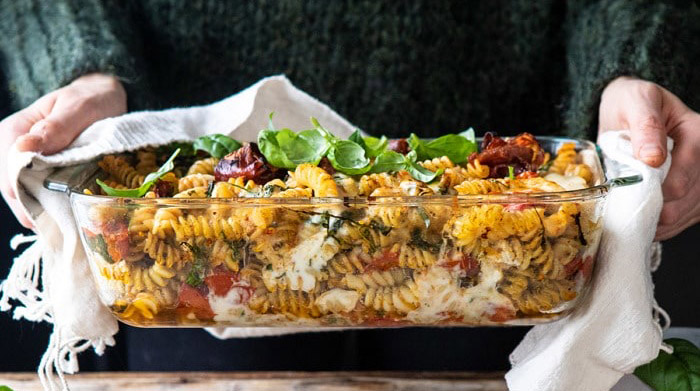“What’s the kids’ favorite food that they’re not getting very often these days?”
Our friend John – my husband’s old boss, actually, and later our son’s scout leader – knew that my 43-year-old husband, Dennis, had been diagnosed with terminal brain cancer. The room parent in our daughter’s class had set up a meal train, and we’d been receiving meals three times a week for several months at that point. Meal delivery would eventually last the better part of a year, and grow to include many friends, friends-of-friends, colleagues, and neighbors. John probably suspected that we were getting a lot of casseroles – all very much appreciated, of course – and that the kids would welcome a special treat.
“That’s easy. Sushi. The kids love it, and we haven’t had it in ages,” I replied.
“Can I bring sushi the next four Wednesdays?” he asked. “What type do you like, and what time should I bring it?”
Thus started a ritual that we all looked forward to. John would arrive each week at our house on his motorcycle and retrieve the takeout containers that were carefully packed in his saddlebags – tuna rolls for the kids and Dennis, Philadelphia rolls for me – and then come in for a short visit. It was such a thoughtful way to bring a meal. We all looked forward to his visits, and to the special dinners, too.
It got me thinking: what are some creative ways to bring food when a family is in crisis?
I asked some listeners of the Widowed Parent Podcast what was most helpful to them, from a food-and-meal-delivery perspective, when their families were in the throes of grief. Karen, a widowed mom in Georgia, said, “My friend contacted me recently and said ‘Hey, I am guessing this is a hard week because it would have been your anniversary. I would love to send dinner.’” Karen added: “Can I just tell you how awesome that was?”
Here’s where Karen’s friend got creative: she made arrangements for Uber Eats to bring the meal. This is an innovative application of today’s tools to the age-old practice of bringing meals to friends at times of serious illness or death. It works just as well for people who want to send a meal from afar, too.
When I recall the many times people brought us food while my husband was ill, and after he passed away, a few other experiences stand out. There’s the person who signed up to bring dinner on Father’s Day, and inquired whether we’d rather have a picnic of brunch-type foods that we could take along to the skilled nursing facility where Dennis was staying at that time. Another friend, on her meal delivery day, said, “I’m bringing pizza from Pagliacci’s. What toppings do you like?” Other people dropped off breakfast foods, snacks, or fresh fruit along with their dinner deliveries, so that we’d have good food in the house at a time when getting to the grocery store on a regular basis was nearly impossible.
Some people made creative use of the postal service to make sure we didn’t go hungry. Cards from friends near and far arrived, and some of them included a Starbucks card so I could indulge in a little self-care, or a gift card from an ice cream shop so I could take the kids out for a special treat. And then there’s the person who found out what hospital my husband was frequenting for radiation and took the time to find a Chinese restaurant in the area. She picked up a gift card large enough to cover dinner and dropped it in the mail, along with a thoughtful card.
Homemade food was, of course, very welcome too. There were a few simple dishes I’d never thought of – meatball subs come to mind – that were winners with the kids, and have since become part of our regular rotation. If you bring homemade food, it’s worth the extra effort to send it in a disposable container. I have lost no less than three glass casserole dishes over the years when I’ve dropped off food for friends at times or illness or death. It wasn’t until I was the recipient of a meal train myself that I realized why: at a time of crisis, it’s just too overwhelming to keep track of which dishes belong to whom, wash them, and coordinate their return.
Finally, here’s a pro tip: a friend once told me that the best meal delivery she ever got included a note with these magic words: “Please do not send a thank you note for the food. You have enough going on and I don’t want to add to your to-do list.” My friend was so grateful that she shared this tip with anyone who would listen for years afterward.
Bringing food to friends and loved ones in times of crisis is a time-honored tradition. Often people worry that they don’t know a good casserole recipe, or that they don’t have time to squeeze in extra cooking. It doesn’t have to be that way. With a little creativity, we can make sure our loved ones are well-fed and that they feel supported at a time when they need it most.
Find more tips for supporting grieving friends in my free guide “How to be helpful: Tips for allies of widowed families.”
This piece was originally published on jennylisk.com.


